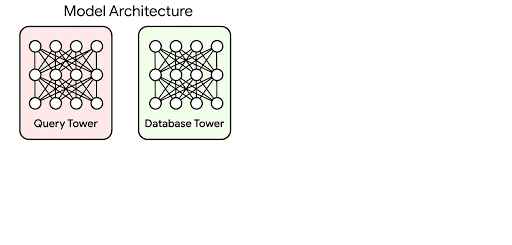- Google Cloud
- Articles & Information
- Community Blogs
- Building Enterprise-Ready Generative AI Applicatio...
Building Enterprise-Ready Generative AI Applications with Vertex AI Vector Search
- Subscribe to RSS Feed
- Mark as New
- Mark as Read
- Bookmark
- Subscribe
- Printer Friendly Page
- Report Inappropriate Content
In today's data-driven world, organizations are struggling to extract meaningful insights from vast amounts of unstructured information. Traditional keyword-based search methods often fall short, failing to capture the nuances and relationships between data points.
This is where Vertex AI Vector Search comes in, offering a powerful tool for building enterprise-ready generative AI applications.
What is Vertex AI Vector Search?
Vertex AI Vector Search is a managed vector database on the Google Cloud Platform that enables you to search for similar items across large datasets using vector representations. These vectors encode complex relationships and semantic meaning, allowing for more relevant and accurate search results compared to traditional methods. It was formally called a machine engine.
What are embeddings? How are embeddings related to Vertex AI Vector Search?
Embeddings are a way of representing data as n-dimensional vectors, in a space where the locations of those points in space are semantically meaningful. These embeddings can be then used to find similar data points. You can get text embeddings using Vertex AI Embeddings API. These embeddings are managed using a vector database.
In traditional IT systems, most data is organized as structured or tabular data - using simple keywords, labels, and categories in databases and search engines.
In contrast, AI-powered services arrange data into a data structure known as “embeddings.”
Embeddings are a way for AI to organize data based on its meaning, so it can do semantic search instead of keyword search.
Once trained with specific content, AI creates a space called an “embedding space,” which is essentially a map of the content’s meaning, where contents with similar meaning are closer together in the space.
The two-tower model, illustrated below, is a specific type of embedding-based search where queries and database items are mapped to the embedding space by two respective neural networks. In this example, the model responds to natural-language queries for a hypothetical literary database.
Why use Vertex AI Vector Search for generative AI applications?
Here are some key benefits of using Vertex AI Vector Search for building enterprise-ready generative AI applications:
- Enhanced Search Accuracy: Vector search captures the true meaning of data, leading to more relevant and personalized results. Imagine a customer service chatbot that can understand your intent even if you use unconventional language.
- Unstructured Data Support: Process text, images, code, and other unstructured data formats to unlock hidden insights and connections. This is crucial for tasks like product recommendations, content discovery, and anomaly detection.
- Scalability and Performance: Vertex AI Vector Search is built for enterprise scale, handling massive datasets and delivering fast search results even under high load.
- Enterprise-Ready Features: Benefit from robust security, data governance, and access controls to ensure your data remains safe and compliant.
- Integration with Vertex AI Platform: Leverage other Vertex AI services like Vertex AI Model Garden to generate embeddings and build end-to-end AI pipelines seamlessly.
Building generative AI applications with Vertex AI Vector Search
Here are some real-world examples of how you can use Vertex AI Vector Search to build enterprise-ready generative AI applications:
- Customer Service Chatbot: Train a chatbot to understand user intent and respond with relevant information, even when phrased differently than expected.
- Product Recommendation Engine: Recommend similar products based on user preferences and product attributes, leading to increased sales and customer satisfaction.
- Content Discovery Platform: Help users discover relevant content across diverse formats like text, images, and videos.
- Fraud Detection System: Identify suspicious activity by comparing transactions to known fraud patterns.
- Personalized Search Experience: Customize search results based on individual user profiles and preferences.
Steps to implement Vertex AI Vector Search
The following are the steps to implement Vertex AI Vector Search in Google cloud
- Create embeddings from your data or dataset.
- Create an index.
- Upload embeddings to the index.
- Create an index endpoint in the Vector Search Database.
- Deploy the index to the index endpoint.
- Perform an online query to find the nearest neighbors
To learn more about the implementation, please check one of our notebooks [2][3] referenced below.
Resources and getting started with Vertex AI Vector Search
Vertex AI Vector Search is a key component for Generative applications which helps in grounding your application with enterprise data. The platform provides comprehensive documentation, tutorials, and sample code to get you started quickly. Additionally, Google Cloud offers various resources to support your journey, including:
Conclusion
Vertex AI Vector Search empowers you to build secure, scalable, and enterprise-ready generative AI applications. By leveraging the power of vector representations, you can unlock the true potential of your data and deliver exceptional experiences for your users and customers.
- Looker x GenAI: BigQuery Semantic Search Block
- Google Cloud Credentials Get a Boost with Credly
- Building Enterprise-Ready Image Annotation Solutions with Cloud Vision API
- Calling All Developers: Connect, Learn, and Earn from Google Cloud Next '24🎉
- Enhancing Performance and Reducing App Bundle Size with Deferred Loading in Flutter

 Twitter
Twitter


